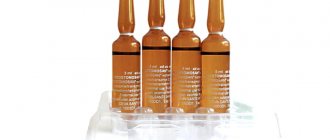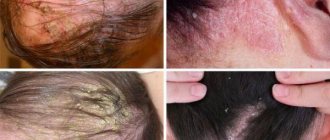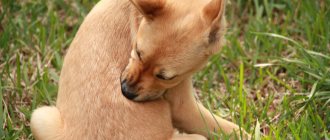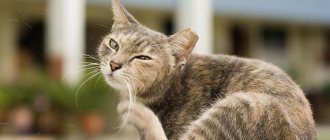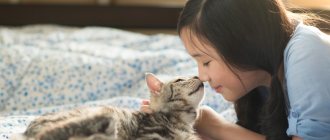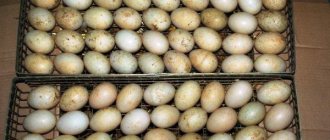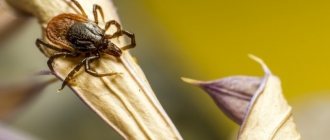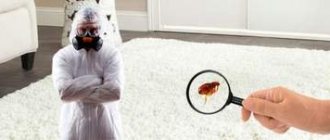What to do if you notice that your chinchilla is itching? It’s worth figuring out what the reason for this behavior is and trying to remove the source. Many believe that since chinchillas have fairly thick fur, this eliminates the possibility of infection by fleas, ticks or lice. This opinion is wrong, so if you don’t know why your chinchilla itches and bites itself, be sure to show it to a specialist.
Why does a chinchilla itch or bite itself and what to do about it?
If you periodically notice your chinchilla itching, do not immediately sound the alarm. All animals do this sometimes, but if the animal bites itself and itches constantly, examine it. The condition of the rodent's skin determines whether it needs the help of a veterinarian, or whether a minor correction of care is sufficient.
If the chinchilla does not lose hair, it has clear skin without redness, blisters or peeling; it may itch due to the dry air in the room. In this case, limit bathing in the sand to once a week or use a humidifier. Otherwise, you need to show the animal to a specialist and carry out the treatment recommended by him.
Dental problems in hamsters, rats and other rodents
Sometimes, due to the lack of coarse fiber in the diet, the rodent develops an incorrect bite or the incisors lengthen due to lack of grinding. This all causes a lot of discomfort, which is why he may refuse to eat altogether. This most often occurs in rats and hamsters, but in others it happens less frequently.
In this case, he needs to be force-fed with ground food and taken to a veterinarian, who will grind down his teeth. After this (for prevention), you should add hay and tree branches to your pet’s food, sometimes even small pieces of wood. This will allow the rodent to grind down its own teeth.
These are not all the diseases that rodents have. There are many others that can be dangerous and get caught by a rodent. Therefore, it is worth regularly carrying out preventive measures. Vitamins, which should be in the pet’s diet, and fresh air will also help in the fight against diseases (to do this, just take the rodent out to the balcony or open a window). This is all necessary for a healthy life, just like other animals.
Symptoms of ectoparasite infection
Ectoparasites are parasites that live on the outer surface of the body of an animal or human. These include fleas, lice, and ticks. Chinchillas are infected with them relatively rarely due to their dense fur, but this possibility cannot be excluded until examination and testing are carried out.
The presence of parasites is detected by characteristic symptoms:
- the animal bites its fur, twitches and rubs its back against the wall;
- scratches the skin until it bleeds due to severe itching;
- the fur becomes brittle and falls out, especially on the head and paws, where it is less dense;
- bleeding ulcers and bumps appear on the skin;
- in serious cases there is swelling and suppuration.
Article on the topic: Mating and reproduction of chinchillas (breeding) at home for beginners
Attention! If treatment is not treated promptly, the pet may die from exhaustion or blood poisoning.
Inspection rules
To understand whether there is a problem, you need to examine your pet's paws and ears. In these places, the fur is sparse and the skin is thin. Sometimes parasites settle on the stomach and head. A flea can live on a chinchilla's back, but this area is the last area to become infected.
It is extremely rare to see parasites through fur. In the event of any threat, insects quickly hide in thick fur, so a person does not have time to notice them. However, brown feces and flea eggs can be seen on light-colored fur. The latter look like small dark grains.
You can understand that a chinchilla is infected by the following indirect signs:
- Itching. Appears in the early stages of a pet. It disturbs the animal even during sleep.
- Bites. Marks appear on the skin that can be confused with rashes.
- Deterioration in appearance. With severe infection, the body becomes depleted. The chinchilla is losing weight and losing hair.
- Anemia. With the development of anemia, the mucous membranes become pale.
Chinchillas have quite thick fur and it is very difficult to see the insect during inspection.
The main parasites of chinchillas
There are several types of ectoparasites that are found in chinchillas.
Fleas
These wingless insects jump high and cling to animal fur with their claws and bristles. The flea's body length ranges from 1 to 5 mm, and its mouthparts are designed to pierce the host's skin and feed on blood. They carry pathogens of dangerous diseases such as typhoid, plague, and hepatitis.
Chinchillas can become victims of cat, rabbit and rat parasites. When infected with fleas, the animal itches, hair falls out, and bites resembling warts appear near the face and on the limbs. Insects can be detected by parting the fur.
Lice and lice eaters
Both types of parasites live in the fur of mammals; the sizes of individuals vary from 0.5 to 10 mm. Lice feed on blood, and lice eaters feed on blood and skin particles. They reproduce quickly, laying white eggs - nits that stick tightly to the hair.
These insects also carry infections that are dangerous to people and pets. Their bites cause severe itching and anxiety in animals, as well as scratching on the skin.
Ticks
Chinchillas are parasitized by subcutaneous and ear mites that live in the upper layer of the epidermis. Because of them, bumps, peeling and crusts appear on the skin, the animal often itches and experiences severe discomfort.
The diagnosis is made after microscopic examination of the scraping. Curing a pet from ticks is quite difficult and is often possible only in the initial stages: first, the animal is cut, then washed in a 0.5% bromocyclene solution 4 times at intervals of 8 days.
One chinchilla chews the fur of another chinchilla
Two animals are sitting in one cage. In one of them you see parts of the fur that seem to have been cut with scissors or “moth-eaten.” The fur is not gnawed down to bare skin. If these bald spots are on the back or withers of the animal, it is logical to assume that the fur was chewed by a second chinchilla.
There was a similar case in our nursery; the female sometimes gnawed the male’s fur. The married couple had no conflicts; there were no violent fights with snatches of fur being torn out. On the contrary, it was a prosperous chinchilla family. We did not see any reasons for stress or poor nutrition as described above. The only assumption is that the female in this way either shows love for the male, or punishes him, using moderate “domestic violence.” Such are chinchilla family affairs.
There is an opinion that gnawing as a bad habit is inherited. Based on observations in our nursery, we cannot confirm this assumption.
I hope you now understand how to treat fur gnawing in chinchillas. I will add the following - if you keep one chinchilla, try to ensure that it avoids the stress of loneliness. Add variety and entertainment to your pet's life. A spacious cage, a hammock, a running wheel, chewing sticks, walks on the sofa. Or buy a second chinchilla.
How to get rid of parasites
Never try to cure a chinchilla of parasites on your own using popular pet medications. At best, this will not bring results; at worst, the wrong dosage will lead to poisoning. The veterinarian must make a diagnosis and prescribe the necessary medications.
Article on the topic: Chinchilla convulsions: why does a chinchilla tremble and shake - causes and treatment
When treating fleas, a special collar for pets is successfully used. If your chinchilla is infested with insects and there are dogs or cats in the house, they should also be treated.
To get rid of parasites, be sure to disinfect the enclosure, change the filler, bedding and sand. It is also necessary to clean the entire apartment.
How fleas get into an apartment
If you are interested in the question of why your chinchilla itches and bites itself, check it for fleas, even if it is the only animal in the house. After all, bloodsuckers can get into a city apartment or private house in several ways:
- flea larvae or young, active insects can be carried on clothes and shoes;
- through ventilation shafts, openings;
- with sand and food, even purchased in a store;
- and the most common option is with pets who prefer warm, damp places for walking - basements, attics, sheds.
Important! If fleas are detected, you should start fighting immediately, because one mature individual lays a large number of eggs per day, which, under favorable conditions, turn into an adult insect within a few days.
Ringworm or fungus in chinchillas
If your pet itches and bites itself, the cause may be a fungal skin disease - ringworm, or ringworm. Signs that distinguish the disease:
- hair loss in certain areas;
- peeling of the skin;
- formation of crusts and red spots;
- sometimes discharge of pus from wounds.
A chinchilla usually easily tolerates the disease, but if it is neglected, the animal can become completely bald, and the fungus can also affect other organs.
Diagnosis is carried out using an ultraviolet lamp in a dark room: with dermatomycosis, areas of the skin glow green. This test does not detect ringworm caused by some types of fungi; in such cases, skin and hair samples are taken for microbiological analysis.
Factors that increase the risk of disease:
- chronic stress;
- avitaminosis;
- malnutrition;
- high air humidity;
- poor hygiene;
- contact with the vector.
Ringworm is an unpleasant disease, but relatively easy to treat. Therapy is prescribed by a veterinarian; drugs such as clotrimazole, lamisil, exoderil, etc. are usually used. There is a vaccine against fungus that is administered to chinchilla puppies after 6 months.
Ringworm is easily transmitted to humans, so a sick animal should be isolated and touched only with gloves.
What to do with an aggressive animal?
It happens that the chinchilla itself is temperamental or poorly trained. In this case, the process of weaning off bites may become more difficult. And yet, one should be persistent in the matter of education. The approach to an aggressive animal is standard. You need to take care of comfortable conditions and accustom your pet to feeding on a schedule. Over time, even a frisky and wayward fluffy will trust you and forget about biting.
During the “training” process, it is permissible to lightly flick the animal on the nose if it bites while taking food. He must understand that this is unpleasant for you.
An aggressive chinchilla may bite
You can only pick it up for a few minutes. You cannot play with your pet for a long time, make noise or make any sudden movements. Otherwise, it is very easy to lose the trust you have gained.
During the mating season
The behavior of a chinchilla can change beyond recognition during the mating season. Moreover, this applies to both males and females. The former are characterized by an excited state - they are ready to fight for the second half. Females during this same period can be extremely irritable.
There's nothing you can do about nature. On such days, it is better to limit contact with animals. Attempts to “educate” a pet will still lead to nothing.
If they bite each other
When you try to place one chinchilla with another, you may encounter aggressive behavior of the animals. Conflicts between rodents are not uncommon: they feel competition for space, for food, they may not like the smell, etc. Therefore, after placing one animal with another, it is important to carefully observe them for at least an hour.
If the “owner” of the cage tries to bite or behave aggressively, you can put him away for a while as punishment. When the animal understands that it may lose its cozy corner, it will calm down.
Having become accustomed to each other's smell, chinchillas will eventually become friends and coexist peacefully to your delight.
Prevention of parasite infection in chinchillas
To prevent your pets from becoming infected with ectoparasites and fungi, you need to follow several rules:
- buy quality food and fillers;
- wash the cage and walking areas every day;
- Completely disinfect the cage at least once a month;
- keep chinchillas in a spacious enclosure;
- ventilate the room regularly;
- before adding a new resident to the enclosure, place him in quarantine for 1.5 months;
- wash your hands and change the clothes you came in from the street in if you are going to touch the animals;
- Include essential vitamins and minerals in their diet.
Article on the topic: Is it possible to keep a hamster in a jar and box, where to put it if there is no cage
If tests do not show infestation with parasites, the chinchilla may chew out its own fur due to stress associated with moving or moving in with relatives. In this case, she is moved to a separate cage for several days, covered with a dark cloth. Other causes of biting include vitamin deficiency, allergies, and other diseases.
Preventing infections is easier than treating them. Follow the rules for caring for chinchillas, and the animals will be best protected from parasites. If you notice signs of infection in them, contact your veterinarian.
Convulsions
Sudden convulsions in chinchillas are a common and quite dangerous ailment.
Seizures in chinchillas can be short-term or last for several hours. Chinchilla convulsions look like a chaotic shaking of the whole body, during which the ears are tight to the head and the paws are completely paralyzed. Breathing becomes heavy and intermittent. The most common reason is a lack of calcium or vitamin B in the animal’s body. Seizures in chinchillas also occur as a result of a drop in sugar levels. First aid for an animal:
- Give your pet a piece of date or raisin,
- Intramuscularly administer Dexamethasone - 0.2 ml, or Prednisolone with liquid calcium and glucose,
- Rub your paws and do a light tummy massage (to avoid constipation),
- Examine the animal - often convulsions can cause bruises, fractures, severe sprains,
- Place your pet in a warmer place.
- As soon as the animal returns to normal, you must immediately contact a veterinarian!
If during convulsions a chinchilla lies on its side, breathes heavily and hoarsely, and blood comes out of its mouth, the animal will soon die, since the convulsions have provoked interruptions in the functioning of the heart and even the veterinarian will be powerless.
Prevention of seizures is the constant presence in the animal’s diet of dried fruits, as well as vitamins and minerals: calcium, B vitamins, magnesium and phosphorus.
Stroke
Frequently recurring seizures in chinchillas may indicate a stroke. Understanding the difference between seizures caused by vitamin deficiencies and strokes is difficult, but necessary. Secondary symptoms of stroke are:
- Temporary paralysis of one side of the body,
- Loss of orientation associated with a sharp deterioration in vision,
- The animal does not respond to external stimuli,
- Profuse salivation.
If dangerous symptoms are detected, you should immediately consult a doctor. Drugs and dosage for the treatment of stroke in chinchillas are prescribed only after a full examination, and in most cases chinchillas die quite quickly from self-treatment.
What to do if your chinchilla has fleas
Today, many lovers of furry pets have a chinchilla in their home - a cute and quite active animal. This attractive animal has not only amazing beauty, but also a cheerful, friendly character. In addition, the chinchilla is very unpretentious in maintenance. According to many people, its unusually thick fur serves not only as an decoration for the animal, but also as an obstacle to the appearance of blood-sucking insects. This article will tell you whether chinchillas really have fleas.
Routes of infection
All warm-blooded animals on earth are susceptible to attacks by parasites such as fleas. Chinchillas are no exception. Even if the animal spends all its time in the apartment, this does not mean that it is protected from the pest. Fleas can appear in chinchillas for the following reasons:
- It is enough to have other pets in the house. One of the most common ways to infect a furry creature is to have a dog or cat in the house that regularly leaves the house.
- A person can also bring fleas into the house on outer clothing or shoes.
- It’s not for nothing that fleas are called jumping champions, since in search of their prey they are able to cover very long distances in a very short time.
- The most favorite habitats for fleas are basements and attics, from which insects can enter the house through the ventilation shaft.
- You should also not exclude the possibility that the chinchilla got fleas while at the pet store. Therefore, when buying an animal, you should pay attention to this nuance.
- Another source of infection for a furry rodent is hay, which is most often sold in pet stores or poultry markets. When placing an animal’s favorite treat in a cage, it is necessary to carefully inspect it.
Article on the topic: What to do if a turtle sneezes?
Symptoms of infection
A parasite bite poses a serious danger to the health and even life of a chinchilla, since the pest is a carrier of various infections. And if there is an excessive accumulation of parasites in the animal’s fur, large blood losses are possible, leading to anemia. You can tell if your pet is bothered by blood-sucking insects based on the following signs:
- restless behavior;
- the animal itches very often;
- the injured area of skin turns into something like a wart;
- the presence of flea excrement in the animal’s fur, which looks like black grains;
- A particularly serious case is indicated by hair loss.
How to treat a chinchilla for fleas
Treatment for fleas on an animal consists of treating the animal itself, its bedding and cage. As a disinfectant, you can use a solution made from vinegar and tar soap. The entire room must also be treated. In the absence of such comprehensive measures, it will not be possible to achieve a positive result - after a while, the fleas will attack the chinchilla again.
Sometimes, to treat chinchillas, they practice the use of antiparasitic agents intended for larger four-legged friends - dogs or cats. However, it should be taken into account that the dimensions of the furry animal are several times smaller, which means the dosage of the chemical must be different. Therefore, the use of anti-flea drops, sprays or powder in this case is not recommended. The best option is a collar for dogs or cats. It will not harm the pet, as it has a lower degree of toxicity.
Flea collar for chinchillas
Now you know that chinchillas have fleas. And if they are indeed detected, then ideally it is preferable to seek help from a veterinarian.
Why does a chinchilla bite?
Chinchillas need teeth to chew food. They use them for other purposes extremely rarely - as a rule, in a shock situation as a means of protection. However, you can encounter surprises already in the first days of communicating with an animal. The fact is that at first it is difficult for a rodent to get used to the new environment and the people around it. The animal is under severe stress, so it is not recommended to reach out to it, try to pet it or grab it. Such actions may be regarded as an attempt to attack.
Over time, when the pet gets used to its “house” and the room in which it lives, you can count on a more “close” acquaintance. It is very important to gain the chinchilla’s trust from the first days: surround it with comfort, provide food, do not make sudden movements, and do not make noise. After making sure that nothing threatens it, the animal will allow itself to be stroked, and in the future it will be possible to pick it up.
Chinchilla in arms
If a chinchilla is scared or for some other reason not ready for contact, it may bite. Therefore, under no circumstances should you forcibly drag an animal into your arms. This can upset the relationship between him and people for a long time, and it will be more difficult to achieve favor.
Reviews
Chinchillas can have fleas. I verified this personally when I brought my pet to the veterinarian. He advised me to purchase a flea collar. Now my pet is cheerful, playful and doesn’t itch at all.
Article on the topic: Conjunctivitis (inflammation of the eyes) in a turtle, what to do if the eyes are inflamed and fester
In the summer we often had to go to the dacha, and we took our chinchilla with us. Although there were no other animals nearby, she somehow managed to pick up parasites. After which it began to itch very much. My wife saw the fleas in the cage when she was cleaning it. They took the animal to the veterinarian, where they dropped something on her neck, and that’s it - there were no more problems.
I never knew that chinchillas have fleas. An acquaintance convinced me that insects could not breed in such thick fur.
Let's start with owners who have just purchased a chinchilla.
After purchasing the animal, it must be placed in a cage and NOT DISTURBED AT ALL for the first 2-3 days. The animal must get used to your room, its conditions and your image. Basically, you just need to tame her and then she won’t bite, so there won’t be any danger for her.
After 2-3 days, we begin to talk to the chinchilla and spend 20-30 minutes near its cage. It is best to do this during feeding, when the chinchilla is in a more relaxed state. Under no circumstances should you put your hands on it or try to pick it up or even pet it.
Depending on the nature of the animal, it will begin to show interest in you in the next 1-2 weeks. You will notice that when you approach the cage, he will begin to look at you, his facial expressions become curious, and when feeding, he immediately climbs out. This is the so-called first phase, when the chinchilla is no longer afraid of you.
Now you need to start feeding the animal with tasty treats. It is better to feed with an open palm. Just place a piece of treat on your open palm and wait until the chinchilla comes up and takes it. Thus, you need to feed her treats for a few more days until you notice that she has become more loyal to you.
You can already try to put the chinchilla on your palm, but you should not take it by the scruff of the neck or from behind, it may take this for an attack, start biting and may shoot a stream of urine at you. Only with smooth and slow movements bring your palm under her paws. If she is no longer afraid of you, then she will begin to pick on her herself.
You shouldn’t pet it at first, the chinchilla will get scared. You just need to hold it in your palm and communicate with it. Also, to strengthen the relationship, you can transfer her to the bathing suit every evening and she will associate picking it up with a good event.
Why does a chinchilla itch?
Occasional scratching is not a cause for alarm. Cats, dogs, and people itch periodically. Chinchillas also have the luxury of scratching themselves just because. However, if scabies occurs frequently, have your pet examined. If the chinchilla does not have bald spots, the skin is clean, without peeling, just limit bathing in the sand to 1-2 times a week; perhaps the skin is just a little dry, especially in winter, when the air in the room is dry. However, if there are symptoms of irritation, and the chinchilla chews out the fur, then the causes of the itching may be much more serious. In this case, you can’t figure it out without an experienced veterinarian.
How to stop chinchillas from biting
To wean a chinchilla from biting you, it is necessary that all living conditions are in order, otherwise the weaning process will be very long:
- The correct temperature is from +16 to +20 degrees
- Good food, give in abundance and on time
- Feeding treats, preferably by hand
- Regular communication with the chinchilla and games.
- The animal must be completely healthy.
What not to do:
- Do not pick up a chinchilla against its will, it is stressful for it
- Do not frighten her with sudden movements and screams. It is better not to get a chinchilla if you have very small children, the chinchilla is afraid of screaming and running.
- You shouldn't wake the animal, they don't like it very much. Don't expect a good attitude from an animal if you violate its routine.
Now let's move on to tips that will help stop your chinchilla from biting.
Ringworm or fungus in chinchillas
The most common fungal skin diseases in chinchillas are mycoses caused by Trichophyton mentagrophytes and microsporia caused by Microsporum canis or Microsporum gypseum. Symptoms of these diseases may include the formation of round bald patches with reddened skin, sometimes covered with scabs. The diagnosis is made by scraping the skin from the affected area. Treatment is prescribed only by a veterinarian. The following drugs can be used in treatment:
- 1. Clotrimazole – 1% solution
- 2. Lamisil – spray
- 3. Exoderil - solution
- 4. Nystatin - crushed tablet is added to the sand
- 5. Fungi Stop is a veterinary antifungal agent that is rubbed into the fur.
- 6. Medical sulfur - rubbed into the affected areas, can also be added to the bath.
- 7. Antifungal tablets are prescribed by a veterinarian when the disease is difficult to treat only with external means. These may be griseofulvin or nizoral. The course and dosage are also only as prescribed by a specialist.
- 8. Vakderm F is a vaccine intended for the prevention and control of lichen. Age is a contraindication - chinchillas should not be injected until they are 6-7 months old.
Sources:
https://homjakam.ru/shinshilla/zdorovie/cheshetsya-ili-pokusyvaet-sebya https://apest.ru/blohi/vse-o-blohah/byvayut-li-u-shinshil-blohi/ https://gryzuny .com/pochemu-shinsilla-cheshetsya.html


